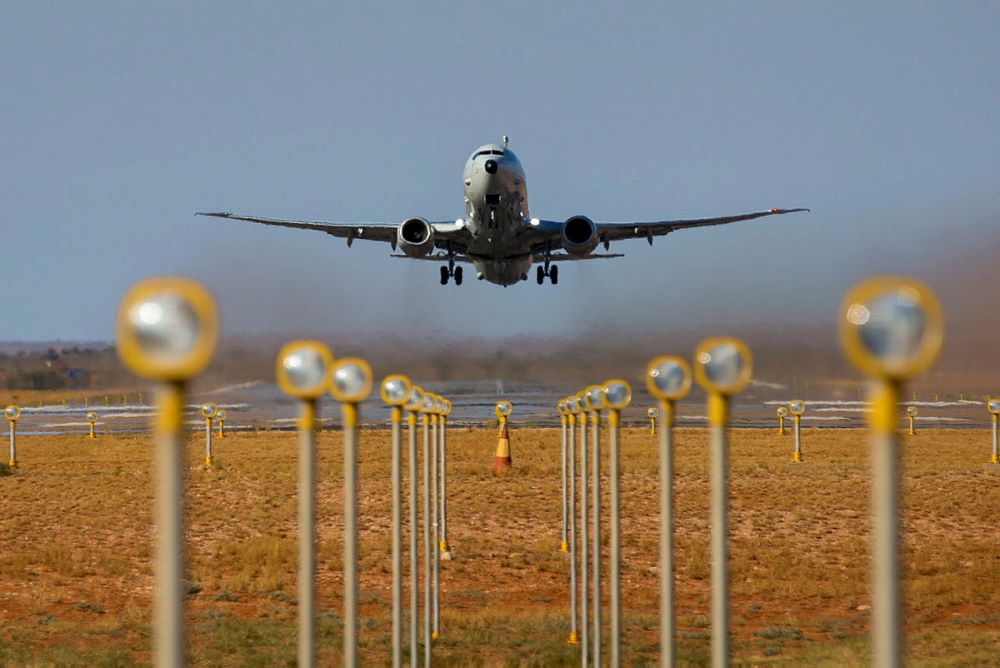
A significant focus in the 2023 defence strategic review was the north of Australia. While it had the expected references to northern Australia’s military and geographical advantages, more importantly, the review highlighted that a lot of work is needed to ensure that defence bases in northern Australia are appropriately prepared for their role in defending Australia. This theme was again a focal point at the 2023 AUSMIN consultations, and it was a key driver for the Australian Army’s decision to move 1,000 soldiers further into Australia’s north.
The 2023 review stressed the need to upgrade Australia’s bare bases (Scherger, Curtin and Learmonth), and responsibility for the project was later assigned to the chief of air force. Other bases, including those at Cocos, Darwin, Tindal and Townsville, have been earmarked for improvements and upgrades to fuel capacity and infrastructure, security and defensive capabilities, communications links, storage, facilities, aprons and runways. Much of this work can be linked to the requirements of new programs and technologies and the increased operational demands associated with Australia’s evolving strategic environment. How those projects are being funded and managed is yet to be disclosed.
New Australian aircraft programs, including the F-35 Lightning II, P-8 Poseidon, MQ-4C Triton and Peregrine, are all expected to be operated, and perhaps based, in the north. Mature programs, such as the C-17 Globemaster, F/A-18 Super Hornets, KC-30, C-130J Hercules, C-27J Spartan and E-7 Wedgetail, have operated in the region for years.
And it won’t just be Australian capabilities operating in the north on a more regular basis. US Navy and US Air Force programs are also in the mix, including P-8 anti-submarine and naval patrol aircraft and more frequent rotations of B-52 and B-1B bombers.
The rotating US patrol aircraft and long-range strike capability in northern Australia provides alternatives to both Guam- and Okinawa-based US capabilities. Their presence provides considerable response and force projection to the north of Australia.
Now that all these announcements are in the public record, the focus must shift to planning what it will take to be ready and in what time frame. The requirements are likely changing regularly, especially with the US seeking further access to northern bases.
The Australian and US defence organisations have already programmed nearly $4 billion of investment in upgrades to airbases in northern Australian that are already well progressed, particularly at Tindal. Expanding the scope of works to include upgrades to the bare bases makes real the planning, funding and execution challenges. US defence development projects in Australia, like the strategic fuel-storage facility being developed by Crowley in Darwin, are notable for the speed of delivery. Our ally will likely expect the same for the bare base build-outs.
A key question for the project teams across the capabilities is how to merge the plans for the individual bases across the matrix of programs, platforms and missions. Consideration will need to be given to the genuine challenges of setting up and sustaining operational capabilities at the bare base sites, given their distance from each other and from the country’s population and distribution centres.
Planning must also account for the pipeline of significant mining, energy and critical minerals projects already in operation or in the planning phase across the north. These projects, while helpful in creating instant infrastructure where they need to operate in remote sites, are also famous for monopolising the thin local construction markets and resources during their initial phases. Given the small scale of those industry sectors in the north across Queensland, Western Australia and the Northern Territory, Defence may need to get in line to secure the construction and development resources needed to upgrade those remote locations as well as Darwin and Tindal or be prepared to pay a premium to execute these projects as a priority. Investors in those resource and energy projects won’t simply step aside and let Defence go first. A phased approach to determine what can be done in two-year time tranches will allow it to lock in hotly contested resources.
Unlike Tindal, the bare bases are not close to population centres like the town of Katherine. Most have little or no infrastructure to support building efforts. This challenge may force the US and Australian defence organisations to adopt the resources sector model, creating remote camps that aren’t reliant on any civil infrastructure. Australia has significant expertise to assist with setting up these kinds of projects.
However it gets done, Australia and the US have a big job ahead of them that will require careful planning and the efforts of industry and state and territory governments.

